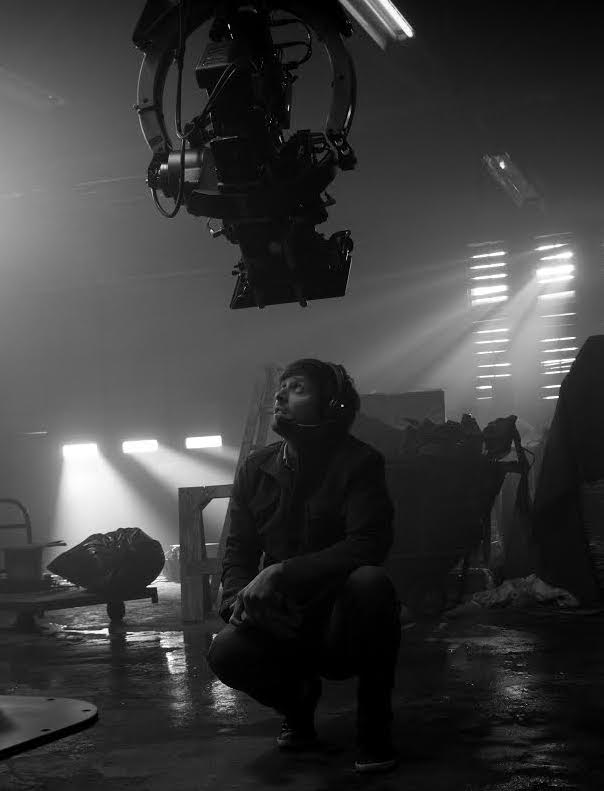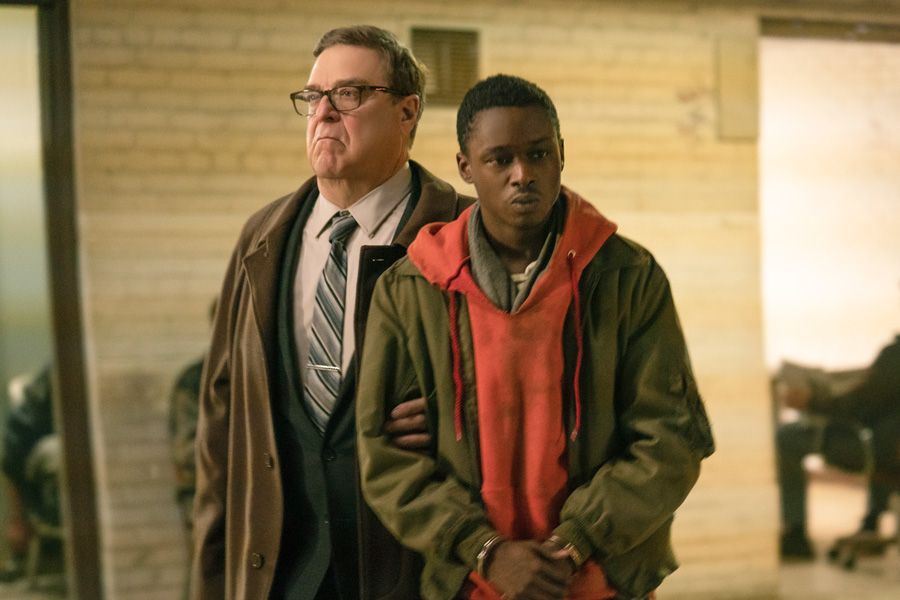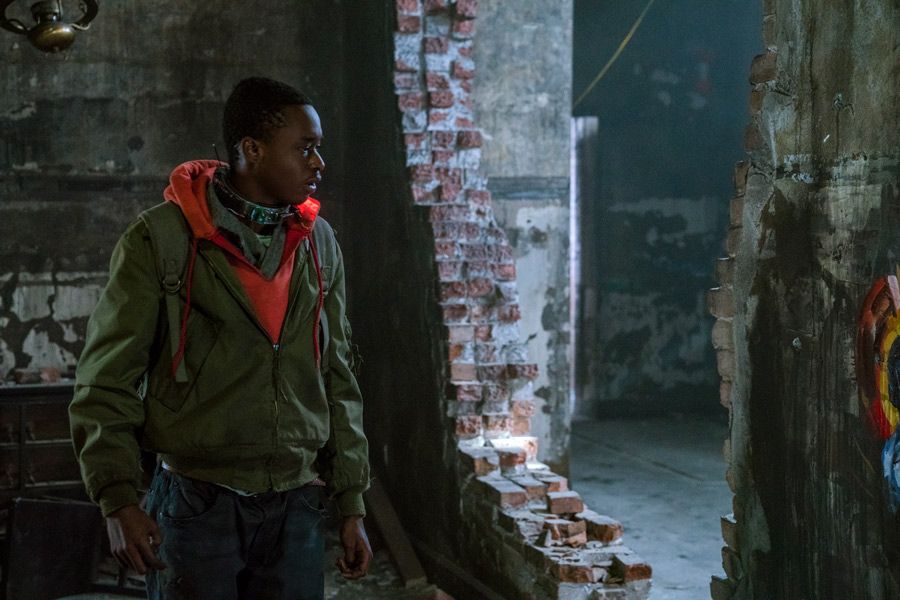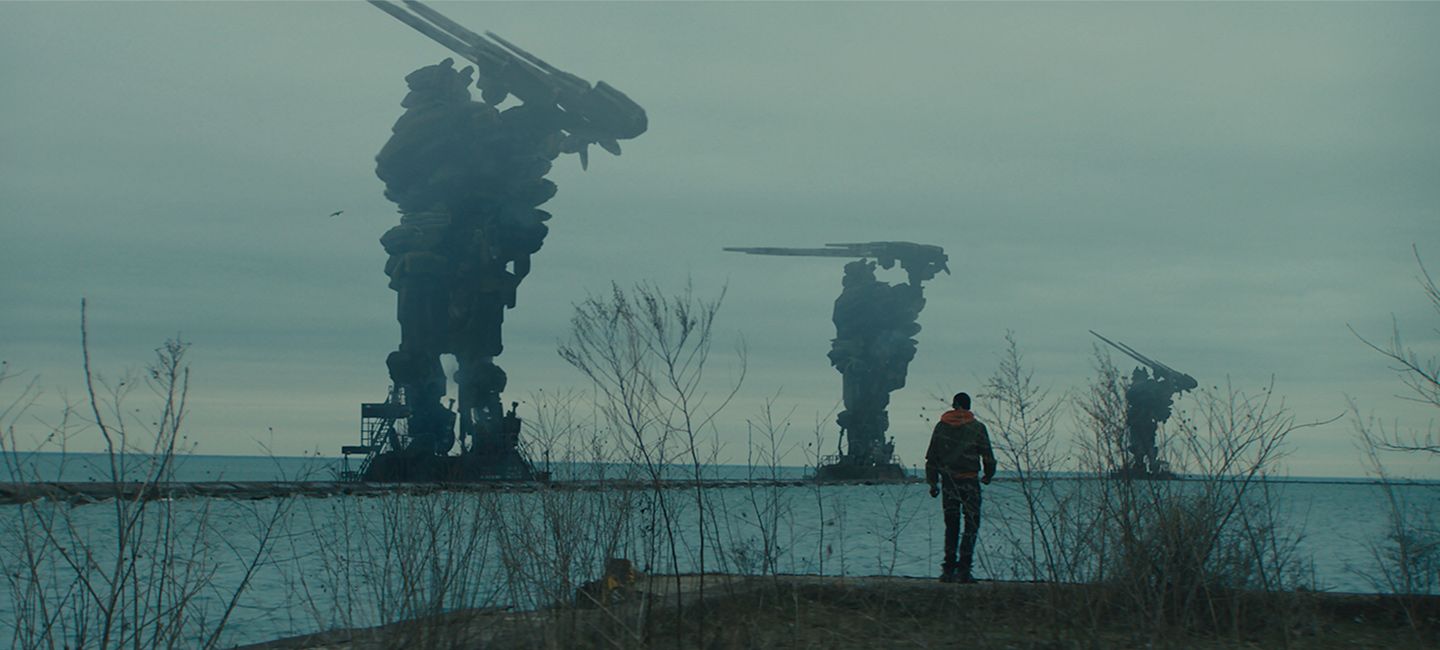Set in the near future, Rupert Wyatt’s Captive State imagines a frightening reality in which the country is under the colonial yoke of beings from outer space. As the aliens tighten their control on Chicago and local activists prepare to fight back, the resistance and collaboration forge a very uneasy peace in which anything could happen at any time. Ashton Sanders, John Goodman, and Vera Farmiga are part of a very talented cast that brings this epic vision of a future dystopia to the screen. To help imagine this world—as well as visually connect it to our own—Wyatt turned to Alex Disenhof, with whom he’d created the look for the critically acclaimed TV drama The Exorcist. For that show, Disenhof’s stylish work won much acclaim, including Hollywood in Toto singling out the cinematography as “beautiful, utilizing crisp tracking shots reminded that reminded me of the Steadicam work in The Shining.”
We spoke with Disenhof about why the film ended up in Chicago, how he filmed the aliens, and the ways this dark futuristic tale shines a light on the world we live in today.
The official trailer for Captive State
When you got hired, what did you see as your biggest creative challenge in crafting the world of Captive State?
I think any cinematographer loves to get an original sci-fi script. The challenge was knowing that the world we wanted to create was vast and sprawling in terms of location and characters. To get that right, you really have to find the right location. It was never going to be a movie in which we were going to be building everything on stage. A year before we shot, I scouted Boston because I grew up there and Wyatt scouted Pittsburg. But when we came to Chicago to shoot The Exorcist, we both realized this could be the place that could be the real-world setting for the film.

Cinematographer Alex Disenhof on set
When you were designing the look, were there films that you looked at for reference?
We looked at a lot of older movies. There was this documentary about the Chilean resistance, [Patricio Guzman’s] The Battle of Chile. And now that I remember it, [Gillo Pontecorvo’s] The Battle of Algiers was a big one for us. Rupert was after a sort of documentary look for a lot of the camera work. I operated the camera a lot myself because we wanted to give a feeling that we were right there with these characters. We were observing things as they happened. It wasn't a shot/reverse-shot type of shooting. I would light the space the best I could and then let the actors do their thing.
The alien presence feels very natural. How did you coordinate the look with the effects team to create that world?
Eric Pascarelli, the VFX Supervisor, was very, very good. We had a lot of discussions during pre-production with him, our production designer (Keith P. Cunningham), Rupert, and me about how best to integrate all of these things. We wanted to capture as much as possible in camera. So we almost never used green screens or blue screens. When we have an alien, it was a guy in a gray suit with tracking markers who was actually interacting with the actors, opposed to the actors working with nothing there. Ultimately it didn't feel like a much different experience than a standard drama without a lot of effects.
What sort of thought did you give to how to represent the aliens?
You don't actually see them that often. We never wanted the film to be a special-effects, cartoony movie. It is very much grounded in the point of view of the people living in the city who don't see the aliens that much. They are captured more in an omnipresent feeling than having big, bad, scary aliens everywhere. So when you do see them, it is more impactful. There were two basic aliens we shot. The spiky aliens were men in grey-suits, as I mentioned. For the hunters, we had six foot, six-inch tall guys wearing massive suits. There were no effects.

John Goodman and Ashton Sanders in Captive State
How did the creative team land on the film’s visual tone?
Creating the palette was a collaboration between Rupert, myself, our production designer, and our costume designer, Abby O'Sullivan—and also my colorist Tom Poole. We wanted to shoot in Chicago in the winter and let that look guide us in terms of the palette. Originally we were hoping for lots of snow to make it a sort of black-and-white movie. We did not get any snow but we did get a very cold Chicago winter which felt very bleak. These people are living in a bleak world—but they still have life. We wanted their world to feel gritty, rundown, and dark, but in the interiors you would find a lot of warmth and character. While the color palette was very controlled, we wanted to give the feeling that these characters were trying to make the best of it during unfortunate times.
What were the colors emphasized in the palette?
We went more towards greens, grays, and browns. I did a series of camera tests with hair and makeup, costumes, and locations, and then developed a look with the colorist that fit. The movie was 80% colored before we even got to the colorist. We wanted to make it feel cold and dirty. This place has gone back in time. Digital devices are gone. Everything is analog. We wanted a tactile feeling so that everything felt very lived in. Not clean. Even the halls of power are concrete. Even though they have clean lines, there is no metal, just concrete. We found a working-class neighborhood in Chicago called Pilsen and took inspiration from the colors there—lots of browns and reds. Overall the pallete was that blue-green quality that you get in the air on a very cold winter's day. I leaned into that.

Ashton Sanders tries to thrive in a broken-down Chicago in Captive State
In the film, you include video that shows life before the invasion. How did you style that footage?
That was really fun. I went out and bought the lowest quality video camera I could find at Best Buy to shoot the scene on. We wanted it to feel like a real home video instead of something shot on a cinema camera and dumbed down later in post. Like everything else in the movie, we want things in camera rather than created later. It ended up being this big choreographed number where I was holding the camera as if I was a guest at the party. I shot in on this really small handycam. At the end, John [Goodman] pans around to show himself by folding my hands inside his and pointing it at himself. When we shot that scene, I really wanted it to feel like a happier time that was full of hope. I overexposed those scenes to give it this quality that was both amateurish in its execution and hopeful in its feeling.
This is a very unique sci-fi story that is at once dark and inspiring. What do you hope audiences take away?
I hope that they can see parallels to the real world. I want people to have a sense of hope. If you want to see change, you have to fight back and do something about it. That is a good message to take from the film.
Sign up for the Focus Insider newsletter to be first in line for free advance screenings, world premiere travel packages, weekend set visits, and so much more!
